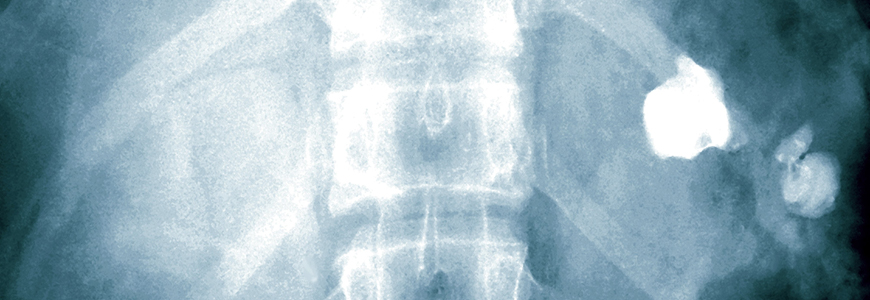With a goal of reducing patients’ pain and discomfort following urolithiasis surgery, Duke urologists partnered with nurses, anesthesiologists, radiologists, surgeons, and patients to launch a broad initiative based on Six Sigma process improvement methodologies. The result is a set of standards and protocols that represent a new approach to the surgical management of urolithiasis.
The majority of symptomatic ureteral and renal stones pass spontaneously or with the aid of medical expulsive therapy, but many patients require surgical intervention. Shockwave lithotripsy, ureteroscopy, and percutaneous nephrolithotomy, although minimally invasive, can cause patients to experience significant postoperative discomfort and to visit clinics or hospital emergency departments for pain management.
Duke urologist Michael Lipkin, MD, played a key role in developing the new approach, which begins before surgery. “One of the new protocols we’ve established is for surgeons to partner with anesthesiologists to deliver preoperative pain management, such as acetaminophen and gabapentin. We’re finding those medications provide a high level of postoperative pain control,” he explains.
Lipkin says that the main discomfort patients experience postoperatively arises from manipulation of their urinary systems and the drainage systems often inserted during surgery. To alleviate these conditions, patients are given anticholinergics when appropriate to reduce bladder spasms and make them more comfortable when they awake. Tamsulosin is frequently administered to ease the discomfort from ureteral stents.
Another area of focus in improving postoperative pain control involves limiting and standardizing the use of opioid pain medications. As part of the work of the Duke Health Opioid Safety Committee, data from patient surveys are being used to estimate how much of patients’ prescriptions for opioids are actually used following any type of surgery. “We’re finding that patients actually use significantly fewer pills than we’ve been prescribing, so we’re beginning to redefine how we manage pain, using more NSAIDs and prescribing fewer opioids,” says Lipkin.
The initial goal for the improvement project was to become more thoughtful in the immediate postoperative stage to reduce patient discomfort, but the focus areas extended to patient education and strategies for the prevention of recurring stones.
“We evaluate every patient who has had more than one stone, or who has risk factors for developing them, with 24-hour at-home urine collections,” says Lipkin. “Urinalysis helps us identify what causes the stones and allows us to develop a preventive plan with patients. We’re finding that the plans help to demystify the causes of stones and engage patients in ways that can help prevent them.” Plans are based on patients’ history and risk factors and can include medications such as potassium citrate and thiazides, which are blood pressure medications to reduce calcium, as well as dietary changes.
Lipkin notes that research on surgical procedures, devices, complications, and prevention is ongoing for Duke urologists, many of whom are nationally regarded for their knowledge and experience in treating urolithiasis. Additionally, he notes that new medications are expected to be available in the near future.
Although results from the improvement project are not yet available, the project was structured to enable outcomes to be tracked and the impact of the new protocols and standards to be studied. “This project plays into a broader theme in health care,” he notes, “where we’re focusing more closely on improving our processes, better utilizing the institutional resources available to us, and refining the ways we can help patients have better surgical outcomes and help them prevent recurrence of stones.”
